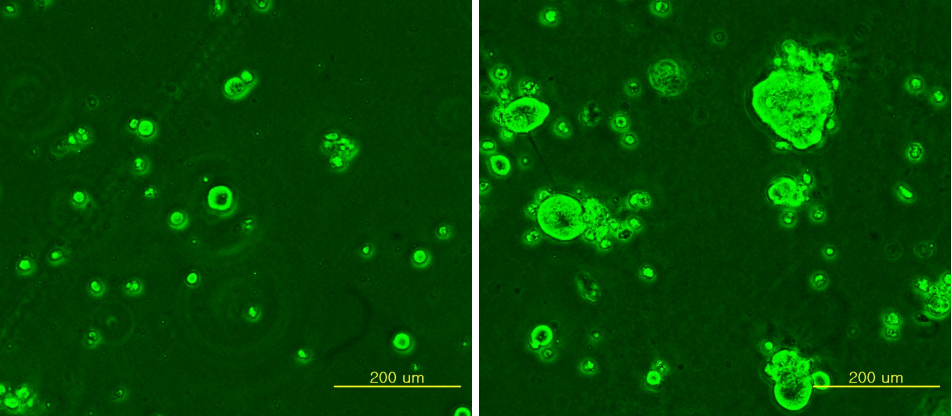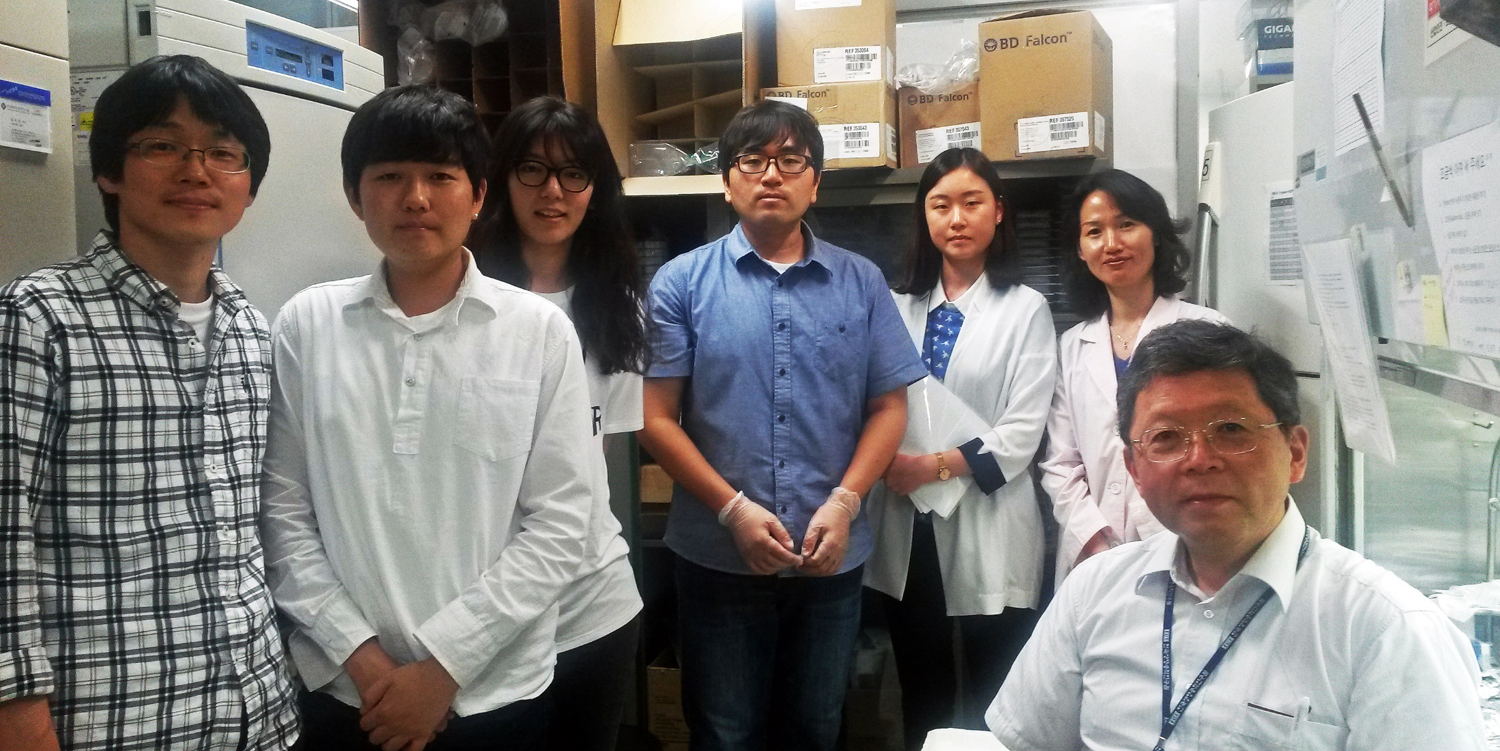Dr. Fukamachi from Japan stays in KRIBB, Korea
A3 Foresight Program: Collaborative Research on the Role of Epigenetic Pathway in Gastric Carcinogenesis
Report of a visit to KRIBB in Korea (June 23 to 28, 2014)
HIROSHI FUKAMACHI (Department of Molecular Oncology, Tokyo Medical and Dental University)
Host researcher
Prof. Yong Sung Kim (Medical Genomics Research Center, Korea Research Institute of Bioscience and Biotechnology, University of Science & Technology of Korea)
Summary
I visited Prof. Yong Sung Kim’ s laboratory (Medical Genomics Research Center, Korea Research Institute of Bioscience and Biotechnology, University of Science & Technology of Korea) in Korea, and a collaborative research was performed on the role of epigenetic pathway in gastric carcinogenesis. The main purpose of my visit was to show how to cultivate human gastric tumor-initiating cells (TICs) using patient-derived tumor xenografts (PDXs). First I showed the method to junior members from KRIBB and Seoul National University, and then junior members by themselves cultivated tumor cells successfully. During my stay in KRIBB, I had a seminar and discussed with scientists in KRIBB. It was a great experience for me to get further insights on the mechanism of gastric carcinogenesis. I deeply thank Prof. Kim and other members of KRIBB for giving me a chance to do experiment in a wonderful institute.
Contents
1. Background
We have investigated markers of human gastric TICs, and found that CD49fhigh cells from newly-dissected gastric cancers formed tumors with histological features of parental ones while CD49flow cells did not when subcutaneously injected into immuno-deficient mice. These results indicate that CD49f, a subunit of laminin receptors, is a promising marker for human gastric TICs. We established PDX lines, and primary culture system for PDX cells where only CD49fhigh cells could grow on extracellular matrix (ECM) to form ECM-attaching spheres. When injected into immuno-deficient mice, these CD49fhigh sphere cells formed tumors with histological features of parental ones, indicating that only TICs could grow in the culture system. Using this system, we found that some sphere-forming TICs were more resistant than gastric tumor cell lines to chemotherapeutic agents. There was a patient-dependent difference in the tumorigenicity of sphere-forming TICs and their response to anti-tumor drugs, indicating that this culture system will be useful to investigate how the tumorigenicity of human gastric TICs is regulated (Fukamachi et al., PLoS ONE, 8, e72438, 2013).
To understand the role of epigenetic pathways in gastric carcinogenesis, a collaborative research has started between TMDU and KRIBB. As a pilot study, frozen TICs were sent from TMDU to KRIBB, and transcriptome and DNA methylome analyses were performed in KRIBB to compare sphere-forming TICs and parental PDX tumors, but consistent results have not been obtained, partly because of poor quantity of samples. We thus planned to show our culture methods to Korean members to enhance the analysis in Korea, in collaboration with Prof. Yong Sung Kim of KRIBB and Prof. Han-Kwang Yang of Cancer Research Institute, Seoul National University College of Medicine.
2. The experiment in KRIBB
The detailed procedures have already been described by Dr. Wei Tian of Department of Cancer Etiology, Peking University School of Oncology, in her report Dr. Tian from China stays in TMDU, Japan. We found that PDX tumor cells grew to form spheres in primary culture, consistent with previous results.

Figure 1: Phase contrast micrographs of HGC-2 cells in primary culture on day1 (left) and 3 (right).
3. Discussion with researchers in KRIBB
A seminar “CD49fhigh cells retain sphere-forming tumor-initiating activities in human gastric cancers” was held on June 25, 2014 in KRIBB. I also discussed with scientists in KRIBB on the role of epigenetic pathway in gastric tumorigenesis.
4. Acknowledgments
I deeply thank Prof. Yong Sung Kim, Dr. Byungho Lim, and all members of Prof. Kim’s laboratory, and Miss. Jimin Min of Cancer Research Institute, Seoul National University College of Medicine for their help and kindness during my stay in KRIBB. I also acknowledge Prof. Se Jin Jang and Dr. Hyang Sook Seol of Asan Medical Center for providing goods and chemicals needed for our experiment in KRIBB.

Figure 2: In the culture room in KRIBB with junior members (From left to right: Mr. Hyun Ahm Sohn, Mr. Dong-Hyuk Bae, Ms. Eun-Hye Seo, Dr. Byungho Lim, Ms. Jimin Min, Dr. Mirang Kim, and me).

Figure 3: With Ms. Jimin Min and Prof. Yong Sung Kim at a pottery in Gyeryongsan National Park.



